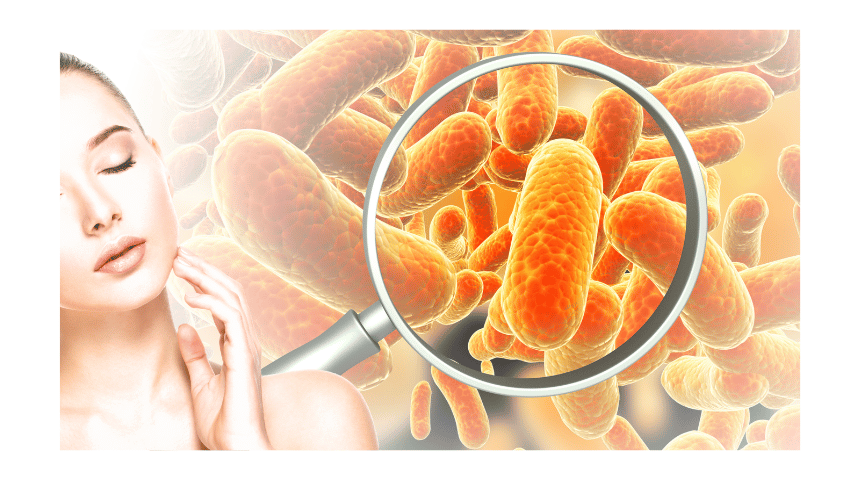In Part 1, we explored what the Skin microbiome is and why it's essential for healthy skin. Now, let's dive into the mechanisms through which the skin microbiome protects and supports our skin's health.
Mechanism of Protection by the Skin Microbiome
The skin microbiome acts as a protective barrier in several ways:
- Barrier Function Support
The outermost layer of the skin, known as the stratum corneum, serves as a physical barrier against environmental stressors, pathogens, and water loss. The microbiome plays a crucial role in maintaining and enhancing this barrier function through several mechanisms:
- pH Regulation: Beneficial bacteria on the skin help maintain an acidic pH (around 4-5), which is optimal for the skin barrier's integrity and function. This acidic environment inhibits the growth of harmful bacteria that prefer neutral or alkaline conditions.
- Lipid Production: Certain skin microbiota, such as Staphylococcus epidermidis, contribute to lipid synthesis on the skin surface. These lipids, including ceramides and free fatty acids, form a protective barrier that prevents moisture loss and shields against pathogens.
- Boosting the Immune System
The skin microbiome interacts closely with the immune cells present in the skin, such as dendritic cells, macrophages, and T cells. This interaction is crucial for maintaining immune homeostasis and responding effectively to threats:
- Immune cells Activation: Microbial components can activate Toll-like receptors (TLRs) on immune cells. This activates the prime immune system to enhance its ability to recognize and respond to potential pathogens without causing excessive inflammation.
- Reduce Inflammation: Some bacteria produce metabolites with anti-inflammatory properties that help calm the immune system and reduce inflammation.
- Fighting Pathogens
Beneficial microbes on the skin compete with pathogenic organisms for nutrients and adhesion sites. This competitive exclusion prevents harmful pathogens from establishing themselves on the skin's surface:
- Production of Antimicrobial Substances: Many commensal bacteria produce antimicrobial peptides (AMPs) that inhibit the growth of pathogenic bacteria, fungi, and viruses effectively neutralizing potential threats.
- Form Protective Layers: good bacteria can form biofilms on the skin, creating a protective barrier that physically blocks pathogen adhesion and colonization.
- Wound Healing and Regeneration
In addition to protective functions, the skin microbiome plays a role in wound healing and tissue regeneration:
- Enhanced Healing Processes: Certain microbial species stimulate keratinocyte proliferation and migration, essential processes in wound closure and tissue repair.
- Regulating of Growth Factors: Microbes can influence the expression and activity of growth factors involved in wound healing, such as epidermal growth factor (EGF) and transforming growth factor-beta (TGF-β).
Importance of Maintaining the Skin Microbiome
Maintaining a balanced skin microbiome is crucial for several reasons:
- Prevention of Skin Disorders: An imbalanced microbiome can lead to various skin conditions such as acne, eczema, psoriasis, and dermatitis. Keeping the microbiome healthy helps prevent these issues.
- Enhanced Wound Healing: A healthy microbiome promotes faster and more effective wound healing by preventing infections and aiding the skin's repair processes.
- Protection Against Allergies and Infections: A robust microbiome acts as a first line of defense against allergens and infectious agents, reducing the risk of allergic reactions and infections.
Tips for Maintaining a Healthy Skin Microbiome
- Avoid Over-Cleansing: Excessive use of harsh soaps and antiseptics can strip the skin of its natural oils and beneficial microbes. Opt for gentle, microbiome-friendly cleansers.
- Use Probiotic Skincare: Utilize Probiotic and Neurocosmetic Skincare: Introducing skincare products enriched with probiotics, prebiotics, and neurocosmetics can effectively reinforce and rejuvenate a balanced microbiome on your skin. reinforce
- Balanced Diet: A diet rich in fruits, vegetables, and fermented foods can promote a healthy microbiome both internally and externally.
- Limit Antibiotic Use: Overuse of antibiotics can disrupt the skin microbiome. Use them only when prescribed by a healthcare professional and explore alternative treatments when possible.
- Stay Hydrated: Proper hydration helps maintain the skin's barrier function, supporting a healthy environment for beneficial microbes.
Conclusion
The skin microbiome is an integral component of our overall skin health, offering protection, boosting our immune response, and aiding in wound healing. By maintaining a balanced microbiome through holistic and neurocosmetic approaches, we can achieve healthier, more resilient skin. Embrace the power of your skin's microbiome and explore the benefits of neurocosmetic skincare to unlock radiant and well-protected skin.
Reffer:
Missed Part 1? No worries! Catch up now: Skin Microbiome: Everything You Need to Know for Healthy Skin - part 1

